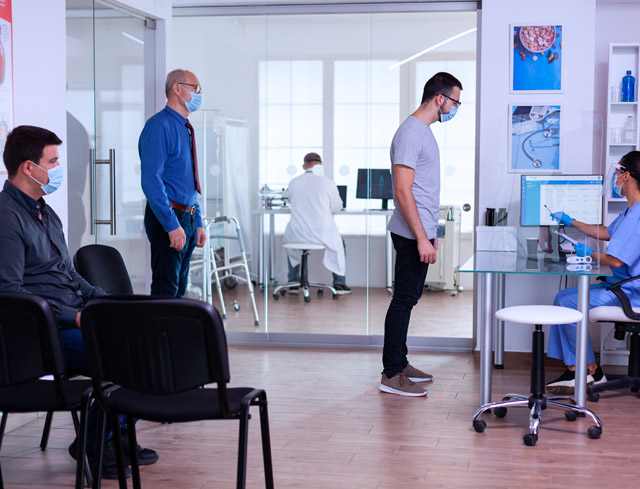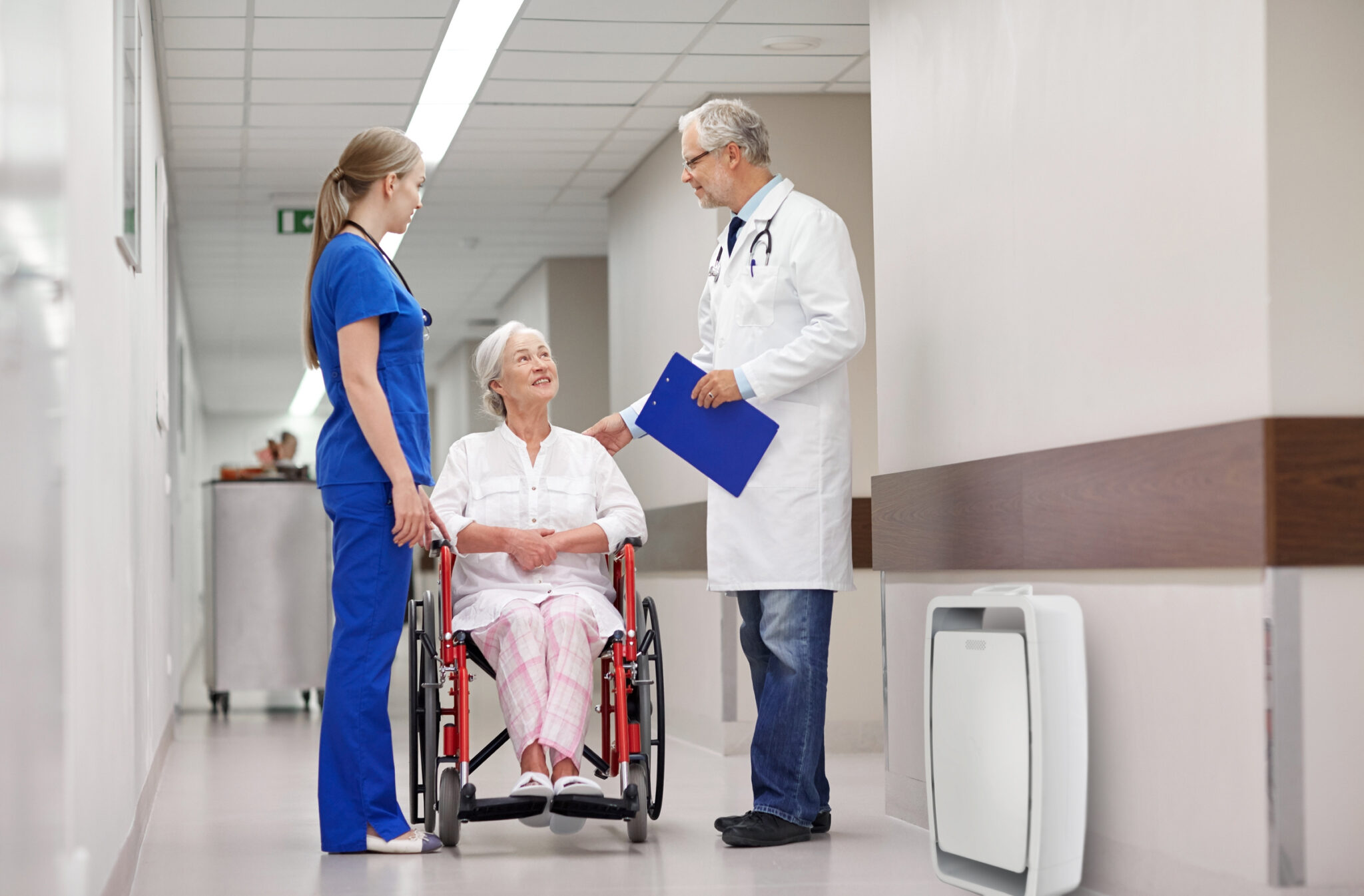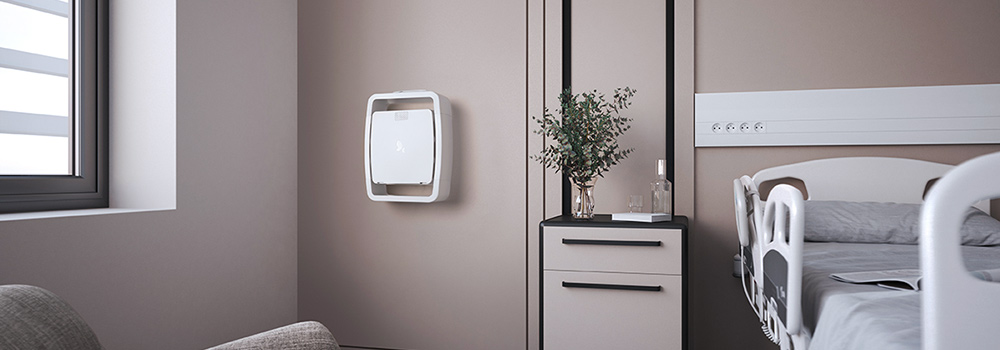12/11/2024


11 June 2024
Nosocomial infections, also known as healthcare-associated infections, are a significant issue for hospitals and clinics. According to the WHO, they affect nearly 1.4 million people globally, and in France, 1 in 18 patients annually, according to Santé Publique France. However, some of these infections, especially those transmitted through the air, could be prevented. What can we learn from the COVID-19 pandemic? What are the costs associated with these infections? What preventive measures exist to combat them? How can we prepare for a new pandemic? NatéoSanté provides insights.
Nosocomial infections can be transmitted in two main ways:
Air quality plays a crucial role in the transmission of certain nosocomial infections. Due to the high concentration of people, hospitals and clinics are environments where microorganisms (bacteria, viruses, pathogens, germs, etc.) can easily proliferate. Every day, hundreds of sick patients, staff (caregivers, maintenance workers, etc.), and visitors intersect in healthcare facilities. The main transmission risks lie in microdroplets: simply speaking and breathing generates droplets, the lightest of which remain suspended in the air and can be inhaled by others.

Au quotidien, ce sont en effet des centaines de patients malades, personnel (soignants, agents d’entretien, de maintenance, etc.) et visiteurs externes qui se croisent dans les établissements de santé.
Les principaux risques de transmission résident dans les microgouttelettes : le simple fait de parler et respirer génère des gouttelettes, dont les plus légères persistent dans l’air, en suspension. Elles sont donc susceptibles d’être respirées par d’autres sujets.
Among the most frequent nosocomial infections is aspergillosis, caused by the fungus Aspergillus. Aspergillosis is a pulmonary infection that mainly occurs in immunocompromised patients, such as those with cancer, organ transplant recipients, or those on immunosuppressive treatments.
Aspergillus spores, present in the air, can be inhaled and develop in the lungs, causing severe infections that can be difficult to treat. Hospital environments, where patients are often vulnerable, are particularly at risk for the spread of this infection. In 2011, the Pasteur Institute reported 50,000 annual cases of invasive aspergillosis in Europe. Effective air filtration systems and rigorous infection control practices are essential to minimize this risk.
Tuberculosis (TB), caused by the bacterium Mycobacterium tuberculosis, is experiencing a concerning resurgence in some developed countries, according to National Geographic. TB is a serious infectious disease that primarily affects the lungs but can also impact other parts of the body.
While often associated with developing countries, factors such as drug resistance, international mobility, and vulnerable populations (e.g., the homeless and people living with HIV) have contributed to its return in developed countries. TB can spread in hospitals through inhalation of droplets containing bacteria emitted by an infected patient, highlighting the importance of strict infection control and monitoring in healthcare facilities.
Whooping cough, also known as pertussis, is a bacterial respiratory infection caused by Bordetella pertussis. According to a Santé Publique France article published on April 18, 2024, despite vaccination significantly reducing the incidence of whooping cough, the disease has been making a comeback in France in recent years.
This resurgence can be attributed to factors such as waning vaccine immunity over time and insufficient vaccination rates. Whooping cough is particularly dangerous for infants and young children but can also affect adults. Hospitals need to be vigilant against this threat, as whooping cough can spread quickly in environments where many people interact and where patients may be particularly vulnerable.
Consult the performance tests of our solution
Since the onset of the COVID-19 pandemic, this disease has become the primary nosocomial infection in France.
In July 2021, Hospimedia reported that "over 60,000 people contracted COVID-19 in French healthcare facilities, while other nosocomial infections have become less frequent since the start of the pandemic."
How can this be explained? As explained by Santé Publique France in its bulletin of 19 November 2020, infections are very often caused by a lack of attention to barrier measures, particularly mask removal, whether between hospital patients and doctors, from patient to patient (particularly in the case of double rooms), by relatives, or even during breaks for healthcare staff. According to SPF, the latter is the cause of 20% of infections.

The WHO highlighted in a July 2020 note that "respiratory droplets have a diameter greater than 5-10 microns. When they evaporate, some generate microscopic aerosols with a diameter less than 5 microns, which remain suspended indoors."
In its 26 May 2023 bulletin, Les Échos reports that, excluding nosocomial Covid, the proportion of infected patients rose by 7.5% in 2023. Although this increase is less pronounced than that observed in 2017, the issue of nosocomial infections remains a major concern for healthcare systems. In particular, four types of bacteria, including Escherichia coli and Staphylococcus aureus, are responsible for almost half of all hospital-acquired infections, a proportion that has remained virtually unchanged since 2017.
According to the ECDC (European Centre for Disease Prevention and Control), more than 3.5 million cases of hospital-acquired infections occur in the European Union and the European Economic Area, resulting in more than 90,000 deaths each year. Alarmingly, these nosocomial infections account for 71% of infections caused by antibiotic-resistant bacteria, including antibiotic-resistant strains. Up to 50% of these infections could be avoided by implementing preventive and infection control measures in healthcare establishments, underlining the crucial importance of these actions.
Hospital-acquired infections entail considerable financial costs, due in particular to longer hospital stays, additional medical examinations and the care required to monitor and treat these infections.
Nosocomial infections lead to considerable financial costs, mainly due to prolonged hospital stays, additional medical examinations, and the necessary care for monitoring and treating these infections. A report from the OPEPS (Office Parliamentary for Health Policy Evaluation) offers an analysis based on several international studies conducted before the pandemic.
The conclusions are as follows: "Applying an average additional cost range of 3,500 to 8,000 euros per infection to the 750,000 annual nosocomial infections results in expenditure ranging from 2.4 to 6 billion euros. Thus, a 10% reduction in the number of infections would lead to savings of 240 to 600 million euros."
The importance of protocols implemented by hygienists in hospitals and clinics is crucial for preventing nosocomial infections and ensuring the safety of patients and staff. Hand hygiene, surface hygiene, and air hygiene are essential components of these protocols. For example, hand hygiene is a simple yet highly effective measure to reduce the transmission of pathogens. Similarly, surface and air hygiene helps limit the spread of infections in the hospital environment.
Since 1999, the RAISIN network (Réseau d’Alerte, d’Investigation et de Surveillance des Infections Nosocomiales) has overseen the surveillance of nosocomial infections in French healthcare facilities, both public and private. At the hospital level, Committees for the Fight Against Nosocomial Infections (CLIN) develop specific prevention actions, implemented by Operational Hospital Hygiene Teams (EOHH). This structured organization allows for rigorous monitoring and a rapid response to infectious threats, ensuring a high level of health security within hospitals and clinics.
Hygiene is paramount in preventing nosocomial infections, whether in healthcare facilities (hospitals, clinics), among staff, or patients themselves.
Patients and their relatives are potential sources of bacteria and viruses, so they must follow strict rules such as wearing masks, hand disinfection, and physical distancing.
With almost half of these infections attributed to four major bacteria, including E.coli and staphylococcus aureus, NatéoSanté has designed and manufactured an air purifier designed to target and eliminate these pathogens. The advanced filters in the EOLIS Air Manager have a unique ability to filter out and eradicate these bacteria, helping to significantly reduce the risk of hospital-acquired infections.

Within the hospital itself, teams must pay special attention to the continuous cleanliness of premises, including surfaces and air hygiene, which is also crucial in combating nosocomial infections.
Since these infections are largely transmissible by aerosols, it is highly recommended to equip patient rooms and common areas (reception, waiting room, cafeteria, staff break room, etc.) with professional air purifiers with proven effectiveness in removing viruses, bacteria, and microorganisms from indoor air, thereby minimizing the risk of cross-contamination within the facility.